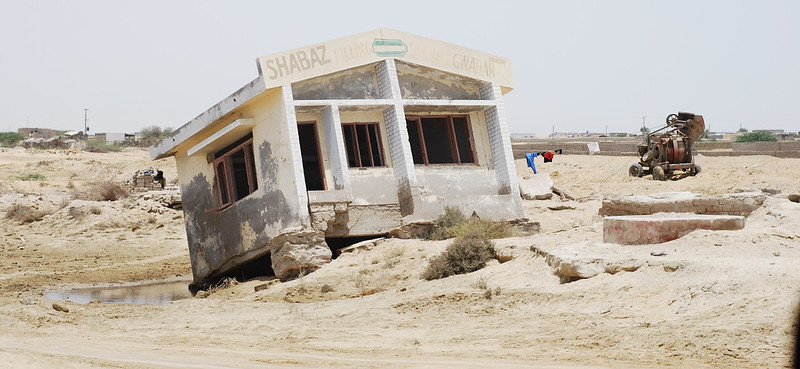Climate Change | Sea Level Rise | Ocean Acidification
April 10, 2025

New Study Projects Climate-Driven Flooding for Thousands of New Jersey Homes – Inside Climate News
Excerpt:
Sea-level rise threatens coastal communities even if global emissions drop.
Some 62,000 people and 56,000 homes on and near the New Jersey Shore will see at least one annual flood because of sea-level rise by 2050, even if the world makes sweeping cuts to carbon emissions now, according to a new online tool released Wednesday by Climate Central, a New Jersey-based research and advocacy nonprofit.
The number of New Jersey residents facing annual flooding by 2050 rises to 68,000 under current “moderate” global commitments to reduce heat-trapping emissions, according to data from Coastal Risk Finder, an updated tool that allows users along the nation’s coastlines to identify and plan for their future flood risk under different scenarios.
Unchecked global climate pollution would result in 74,000 New Jersey residents in 66,000 homes facing increased flood risk over the next 25 years. The Climate Central tool uses sea-level rise projections by the United Nations’ Intergovernmental Panel on Climate Change for all three scenarios.
“Users wanted a simple, intuitive interface, and one that surfaces clear, takeaway messages while providing the depth and detail to back them up,” said Dan Rizza, director of the sea-level rise program at the Princeton, New Jersey-based group during a pre-release briefing for reporters. “It delivers clear, shareable messages.”
The new projections for the extent of sea-level rise and its effects on coastal areas are the latest effort to predict the impact of climate-driven ocean rise on the U.S. coast as a whole. In New Jersey, climate experts, academics and state officials are trying to anticipate sea-level rise effects on a low-lying, heavily developed and densely populated coastline that is especially vulnerable to rising seas.
Another effort to anticipate coastal flooding in New Jersey as seas rise is NJ Adapt, a suite of data-visualization and mapping tools assembled by Rutgers University to help planners, businesses, communities and residents understand and adapt to climate-change effects. The project includes a Climate Planning Tool that explains why seas are rising, and tracks their effects on New Jersey communities, including Atlantic City. There, seas have been rising by 0.15 millimeter a year for the last century, exposing it to increased future flooding.
Lucas Marxen, co-director of the New Jersey Climate Change Resource Center at Rutgers, said the new Climate Central tool is easy for the public to navigate, provides clear information on areas at risk and offers citizens solutions to flooding, a feature that he said is not often found in such tools.
But he said the tool’s description of flood risk may lead users to misunderstand the frequency and severity of future floods. For instance, a “100-year” flood has a force that’s deemed to have a 1 percent chance of happening in any year, but which can happen more frequently than once a century, such as with Hurricane Irene in August 2011, which was closely followed by Hurricane Sandy in October 2012.
“The language used by Climate Central may mislead the public as to the real risk of these types of flood events,” he said.
Kelly van Baalen, project manager in the sea-level rise team at Climate Central, said that communicating the impact and frequency of major storms is challenging. “We acknowledge that it’s tricky to communicate the seriousness of low-probability but severe floods to the public,” she said. “We choose to label flood levels by their return period in our tool because it’s evocative, widely-used terminology, and frankly, you have to use a short name for a tool setting…”
More on Climate Change | Sea Level Rise | Ocean Acidification . . .

The Destruction of the National Oceanic and Atmospheric Administration – Gary Griggs | Op-Ed
“Move fast and break things” is a catchphrase popularized by Mark Zuckerberg, suggesting that rapid innovation and progress are achieved by embracing experimentation and accepting that mistakes and failures are inevitable…While this approach may have benefits in the tech world, it is no way to run a nation, yet, sadly, this is what we are now experiencing in Washington, D.C., with the administration’s plans underway now to essentially destroy the National Oceanic and Atmospheric Administration.

New Study Projects Climate-Driven Flooding for Thousands of New Jersey Homes – Inside Climate News
Sea-level rise threatens coastal communities even if global emissions drop…

Global sea level rose higher than expected last year. Here’s why – the Washington Post
The rate of global sea level rise follows a trend of rapidly increasing rates over the past 30 years…

Trump Administration Launches All-Out Assault on Environmental Protection – Inside Climate News
Environmentalists vow to fight “the greatest increase in pollution in decades.”…

Bad News for the Oceans and the Earth – Gary Griggs | Op-Ed
Decisions made and actions taken over the past several weeks in Washington, D.C. by the new administration are going to have a profound, negative and lasting impact on the health of the oceans and the Earth as a whole…

A city looked at the sea as a blessing. It’s now sinking into it – the Independent
The ocean has now become an existential threat…
